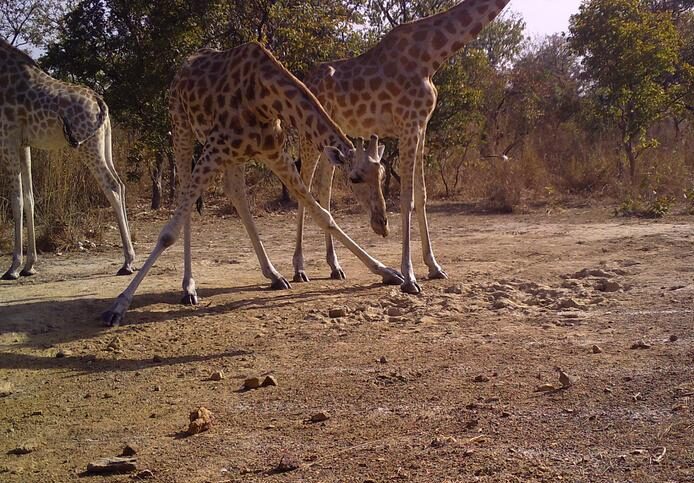Towering pillars
transect the plains,
jagged silhouettes
stretched thin
against aching
horizons –
chestnut spots
loosely patterned
like broken reflections
of the stars above.
Poachers slit their dreams,
whispering with greed
as their homeland
fades from view.
Shadows loom
in the distance:
possibilities,
projections,
preservations
to pull them back –
a flickering hope,
with every birth
erecting new pillars
to stretch once more
across skies of
crimson gold.

This poem is inspired by recent research, which has found that Kordofan giraffes face local extinction if poaching continues.
Giraffes are undergoing a silent extinction across Africa. Several subspecies are now endangered or critically endangered due to threats like poaching, habitat destruction, and civil unrest. Their numbers have declined substantially in recent decades. Specific populations face an even more precarious future. The Kordofan giraffe is critically endangered, with less than 300 left in Cameroon. Their numbers are threatened by poaching and habitat loss.
In this study, scientists used computer modelling to predict how the giraffe population might change under different conditions. Researchers wanted to find out if this specific population in Bénoué National Park can survive, and what can be done to protect them. They found that with no action, these giraffes have a high chance of becoming extinct within 100 years. Anti-poaching efforts are vital to their survival. Bringing in more female giraffes from elsewhere could also help grow the population. But habitat loss remains a big threat – even small declines in land quality could doom the giraffes. The researchers found that protecting this park’s land and preventing illegal hunting are crucial for ensuring the survival of these critically endangered Kordofan giraffes.